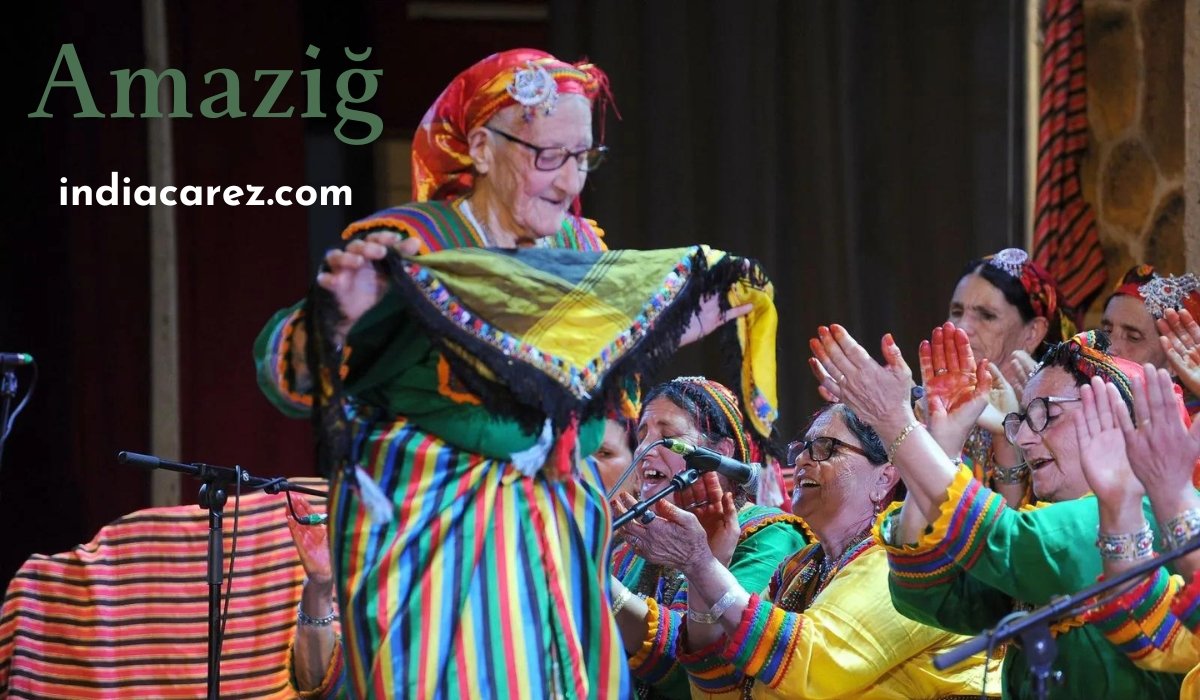I. Introduction
In the grand mosaic of world cultures, the Amaziğ people represent a vibrant thread, woven with resilience, creativity, and a profound connection to their land and heritage. This article embarks on a journey through the essence of Amaziğ identity, exploring its significance in the global context.
Definition of “Amaziğ” and its Significance in World Cultures
The term “Amaziğ” refers to an indigenous ethnic group primarily inhabiting North Africa, notably regions such as Morocco, Algeria, Tunisia, Libya, and parts of the Sahara. Their cultural significance transcends geographical boundaries, resonating with the broader narrative of human diversity and resilience.
Overview of the Amaziğ People and their Historical Background
The Amaziğ, also known as Berbers, boast a rich historical tapestry dating back millennia. As one of the oldest indigenous groups in North Africa, their origins intertwine with the region’s ancient civilizations, including interactions with Phoenicians, Romans, Arabs, and other cultures.
II. Historical Context
Origins of the Amaziğ People
Unraveling the origins of the Amaziğ people leads us into the misty corridors of antiquity. While precise details remain shrouded in the annals of time, scholars speculate about their ancestral connections to prehistoric inhabitants of North Africa, whose lineage shaped the region’s cultural landscape.
The Amaziğ in Ancient History
Tracing their footprint through antiquity unveils a narrative of resilience and adaptation. From the mighty Carthaginian Empire to the Berber kingdoms of Numidia and Mauretania, the Amaziğ people left an indelible mark on the historical canvas of North Africa.
Key Historical Events that Shaped the Amaziğ Culture
The Amaziğ journey is punctuated by pivotal moments, including encounters with external forces, such as the Roman conquests and Arab invasions, which influenced their language, customs, and societal structures.
III. Language and Literature
The Amaziğ Language: Tamazight
At the heart of Amaziğ identity lies the Tamazight language, a linguistic treasure trove reflecting the nuances of their worldview, history, and cultural ethos. Despite centuries of external pressures, Tamazight persists as a testament to the resilience of its speakers.
Script and Writing Systems
The evolution of Amaziğ script and writing systems unveils a saga of adaptation and innovation, from ancient Tifinagh to contemporary adaptations, symbolizing the enduring spirit of cultural heritage.
Oral Traditions and Storytelling
Embedded within the fabric of Amaziğ society is a rich tradition of oral storytelling, serving as a conduit for transmitting collective wisdom, legends, and historical narratives across generations.
Contributions to Literature and Poetry
Amaziğ literature and poetry form a kaleidoscope of emotions, aspirations, and societal reflections, offering insights into their worldview, struggles, and aspirations.
IV. Art and Music
Traditional Amaziğ Art Forms
From intricate textile designs to vibrant ceramics, traditional Amaziğ art forms encapsulate a synergy of aesthetics and cultural symbolism, mirroring the diversity and resilience of their heritage.
Significance of Tattoos and Symbols
Tattoos and symbolic motifs hold a sacred place in Amaziğ culture, embodying ancestral connections, spiritual beliefs, and personal narratives woven into the tapestry of skin and soul.
Music and Dance in Amaziğ Culture
The rhythmic beats of Amaziğ music echo through time, evoking a sense of collective identity and celebration, while traditional dances animate gatherings with vitality and grace.
Famous Amaziğ Artists and Musicians
Across the annals of history, Amaziğ artists and musicians have carved their niche in the global cultural landscape, their works resonating with universal themes of love, longing, and liberation.
V. Social Structure and Daily Life
Family and Community Life
At the nucleus of Amaziğ society lies the family unit, characterized by strong kinship ties, communal solidarity, and a shared sense of responsibility towards one another.
Gender Roles and Societal Norms
Amaziğ societal norms reflect a nuanced interplay between tradition and modernity, with gender roles evolving amidst shifting cultural paradigms and socio-economic dynamics.
Traditional Clothing and Attire
The attire of the Amaziğ people serves as a visual tapestry, woven with intricate patterns, vibrant hues, and symbolic motifs that encapsulate their cultural identity and heritage.
Culinary Traditions and Typical Dishes
The culinary traditions of the Amaziğ people offer a delectable journey into their culinary heritage, characterized by an array of aromatic spices, hearty stews, and savory pastries that tantalize the senses and nourish the soul.
VI. Spiritual Beliefs and Practices
Overview of Amaziğ Religious Beliefs
Amaziğ spirituality encompasses a rich tapestry of beliefs, drawing inspiration from ancestral reverence, animism, and syncretic interactions with monotheistic faiths such as Islam.
Rituals and Ceremonies
Rituals and ceremonies play a pivotal role in Amaziğ spiritual life, serving as occasions for community bonding, ancestral homage, and seeking divine blessings for prosperity and protection.
Role of Spirituality in Daily Life
Spirituality permeates every facet of Amaziğ daily life, infusing mundane activities with profound meaning, mindfulness, and a sense of interconnectedness with the natural world.
VII. Amaziğ People Today
The Modern Amaziğ Identity
In the contemporary landscape, the Amaziğ people navigate a complex terrain of cultural preservation, socio-economic challenges, and aspirations for self-determination, forging a modern identity rooted in ancestral pride and resilience.
Challenges Faced by the Amaziğ Community
Despite strides towards recognition and cultural revival, the Amaziğ community grapples with enduring challenges, including marginalization, linguistic discrimination, and socio-economic disparities.
Preservation of Culture and Language
Efforts to preserve Amaziğ culture and language are underway, driven by grassroots initiatives, academic research, and advocacy for linguistic rights and cultural heritage preservation.
The Amaziğ in Contemporary Society
In contemporary society, the Amaziğ people assert their presence on the global stage, enriching the cultural tapestry of humanity with their contributions in art, literature, music, and activism.
YOU MAY ALSO LIKE
Unveiling Casteò: A System of Social Stratification
VIII. Conclusion
Summary of the Amaziğ Cultural Richness
The tapestry of Amaziğ culture is imbued with resilience, creativity, and a profound reverence for ancestral heritage, enriching the global mosaic of human diversity with its vibrant hues and intricate patterns.
The Importance of Cultural Preservation
As custodians of a rich cultural legacy, the Amaziğ people serve as beacons of resilience and guardians of ancestral wisdom, underscoring the importance of cultural preservation as a testament to human creativity and resilience.
Final Thoughts on the Future of the Amaziğ People
In an ever-changing world, the future of the Amaziğ people hinges upon their ability to navigate challenges with resilience, unity, and a steadfast commitment to preserving their cultural heritage for generations to come. As they embark on this journey, they carry with them the collective wisdom of their ancestors, the aspirations of their youth, and the enduring spirit of Amaziğ identity.
FAQs:
- Who are the Amaziğ people?
- The Amaziğ are an indigenous ethnic group in North Africa, known for their rich cultural heritage and resilience.
- What is Tamazight language?
- Tamazight is the language spoken by the Amaziğ people, reflecting their worldview, history, and cultural ethos.
- What are traditional Amaziğ art forms?
- Traditional Amaziğ art includes textiles, ceramics, and symbolic tattoos, reflecting their cultural identity and heritage.
- What are Amaziğ religious beliefs?
- Amaziğ spirituality encompasses ancestral reverence and syncretic interactions with monotheistic faiths like Islam.
- How do Amaziğ people preserve their culture?
- Amaziğ culture is preserved through grassroots initiatives, academic research, and advocacy for linguistic rights.









